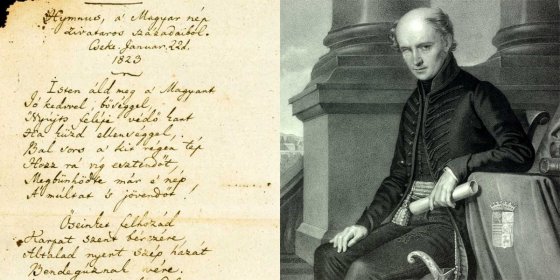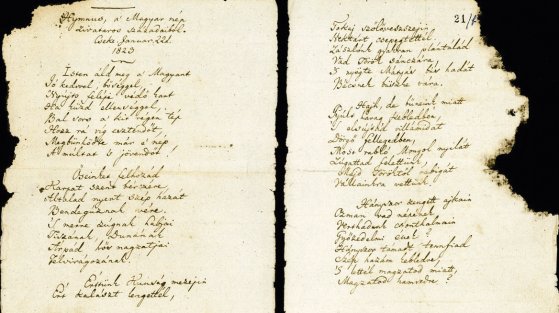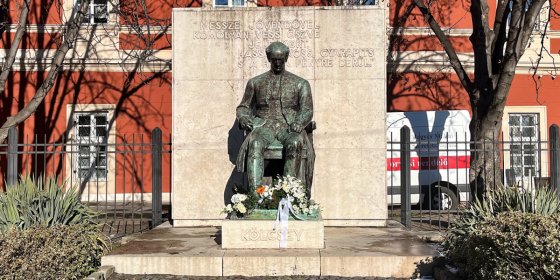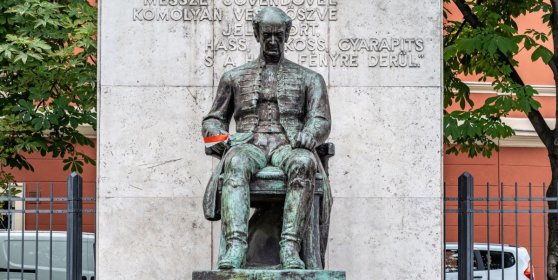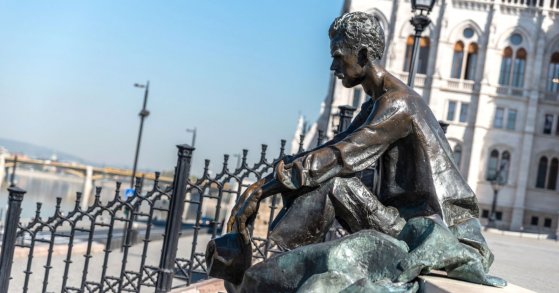 The „intertwined history” of the bridges and the city of Budapest
Which ideas and events have shaped the fate of bridges of Budapest and the cityscape? Alongside many other interesting facts, this question is also answered this newly published book by the Budapest City Archives, which introduces the history of bridges in Budapest.
The „intertwined history” of the bridges and the city of Budapest
Which ideas and events have shaped the fate of bridges of Budapest and the cityscape? Alongside many other interesting facts, this question is also answered this newly published book by the Budapest City Archives, which introduces the history of bridges in Budapest.
Ferenc Kölcsey
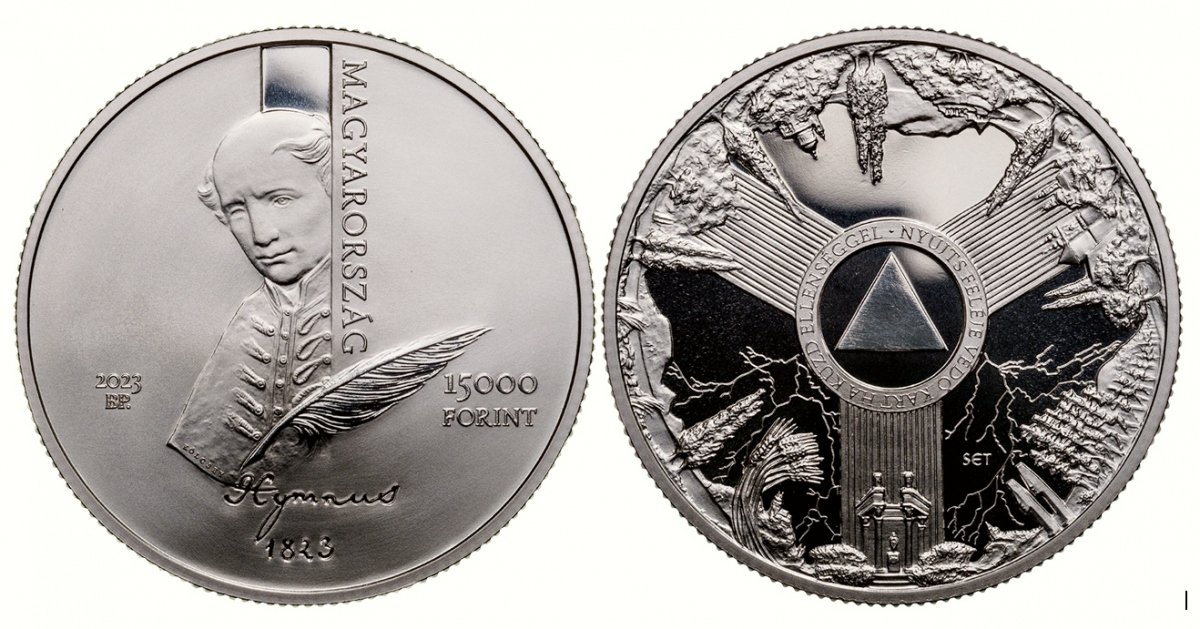 The central bank issued a collector coin on the 200th anniversary of the writing of the National Anthem
The central bank issued a collector coin on the 200th anniversary of the writing of the National Anthem
January 25, 2023 at 2:00 PM
On the occasion of the 200th anniversary of the writing of the National Anthem, the Hungarian National Bank (HNB) issued silver collector coins with a face value of 15,000 HUF and non-ferrous metal ones with a face value of 3,000 HUF. On the obverse of the coin, the portrait of Ferenc Kölcsey can be seen, as well as the inscription Hymnus according to the original spelling and the year 1823 indicating the year of creation of the work.
Stormy centuries: the lines of the 200-year-old National Anthem are still relevant today
January 22, 2023 at 2:00 PM
When Ferenc Kölcsey finalised the manuscript of the National Anthem on 22 January 1823, no one would have thought that the poem would one day become one of Hungary's national symbols. Now, 200 years later, in times of successive crises, Hungarians can once again feel that they have already suffered not only for all the sins of the past but also of the future. The lines of the National Anthem are as relevant today as they were at the dawn of the reform era.
The birthday of the National Anthem: the Ministry of Culture invites people to a joint recitation
January 16, 2023 at 12:30 PM
On the Day of Hungarian Culture, 22 January, on the 200th anniversary of the National Anthem, 200 children, 100 from the motherland and 100 from abroad, will recite Hungary's national poem on the main steps of the Parliament. At the same time, one of the most important Hungarian poems of all time will be recited in four locations across the border, as well as in Ferenc Kölcsey's former residence, Szatmárcseke, and in Veszprém, which has been awarded the title of European Capital of Culture.
The fate of the Kölcsey statue: the Romanians beheaded it, the people of Budapest recreated it
January 22, 2022 at 12:00 PM
The story of Ferenc Kölcsey's first statue in Budapest is very adventurous: the statue of the poet, which was inaugurated in Batthyány Square in 1939 and looked down from a low platform, was able to watch the passers-by from a much more worthy place decades ago. The original of the work in Budapest was inaugurated 125 years ago, hundreds of kilometers from its present location, in Nagykároly. In our article, on the occasion of the Hungarian Culture Day, we present the reasons why the work of art came from Transylvania to Budapest and why it was moved from its original place in Batthyány Square.
In the footsteps of Kölcsey – The poet who wrote the national anthem of Hungary was born 230 years ago
August 8, 2020 at 4:00 PM
Ferenc Kölcsey, born 230 years ago, was one of the greatest figures of Hungarian literature and public life in the Reform Period. His poem, Himnusz ('hymn'), which became the Hungarian national anthem, elevated him among the immortals of Hungarian culture. Despite this, his memory was not marked in Budapest by any public statue or plaque for a long time. Pestbuda examines the current memorial to the great poet in Budapest.
Poetry Day Walk - Statues of the greatest Hungarian poets in Budapest
April 11, 2020 at 10:00 PM
On this year's National Poetry Day, 11 April - the birthday of Attila József - the public, community poem readings, which have already become a tradition, were cancelled, and we could not even visit the statues of the greatest Hungarian poets to show our respect and gratitude. Thus, Pestbuda offers only a virtual walk between the works depicting our national greats in Budapest.
More articles
 The „intertwined history” of the bridges and the city of Budapest
Which ideas and events have shaped the fate of bridges of Budapest and the cityscape? Alongside many other interesting facts, this question is also answered this newly published book by the Budapest City Archives, which introduces the history of bridges in Budapest.
The „intertwined history” of the bridges and the city of Budapest
Which ideas and events have shaped the fate of bridges of Budapest and the cityscape? Alongside many other interesting facts, this question is also answered this newly published book by the Budapest City Archives, which introduces the history of bridges in Budapest.
 The Bridge Report, which brought a turning point in the history of Budapest
A travel report that changed the history of Pest and Buda, as well as Hungary. The little book contributed to the change of half a thousand years of legal customs and the implementation of an investment of unprecedented size and technical quality. This book was The Bridge Report [Hídjelentés in Hungarian].
The Bridge Report, which brought a turning point in the history of Budapest
A travel report that changed the history of Pest and Buda, as well as Hungary. The little book contributed to the change of half a thousand years of legal customs and the implementation of an investment of unprecedented size and technical quality. This book was The Bridge Report [Hídjelentés in Hungarian].
 Drama on the university wall - The heroic monument was planned 95 years ago
In the constant hustle and bustle of the Egyetem Square in Pest, the students may not even notice the monument that decorates the short section of wall between the church and the central building of ELTE. However, it commemorates their predecessors, the heroes who fought for their country in World War I, and those who heroically helped them. The first design of the dramatically collapsing soldier was born in 1928, ninety-five years ago.
Drama on the university wall - The heroic monument was planned 95 years ago
In the constant hustle and bustle of the Egyetem Square in Pest, the students may not even notice the monument that decorates the short section of wall between the church and the central building of ELTE. However, it commemorates their predecessors, the heroes who fought for their country in World War I, and those who heroically helped them. The first design of the dramatically collapsing soldier was born in 1928, ninety-five years ago.

